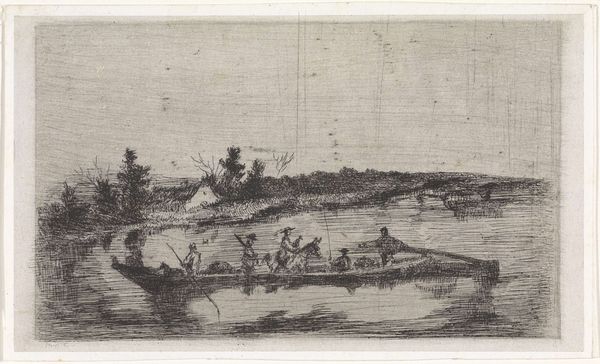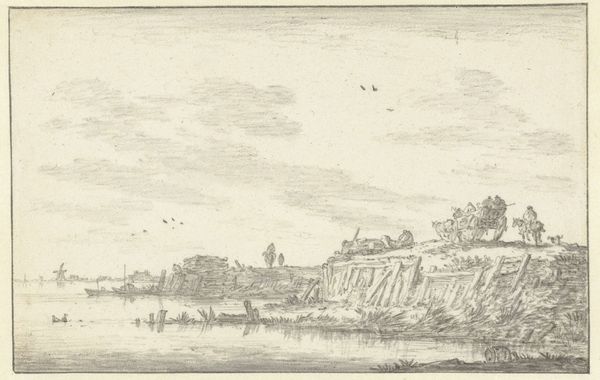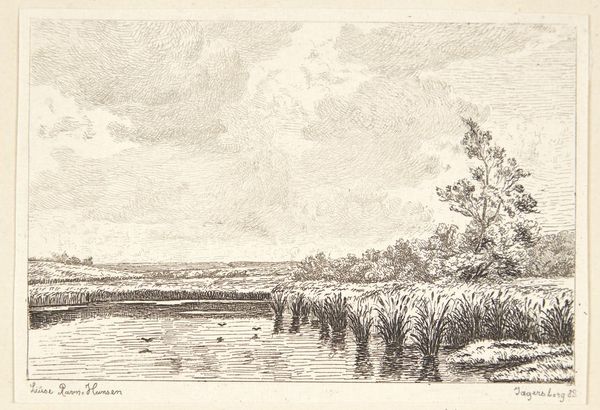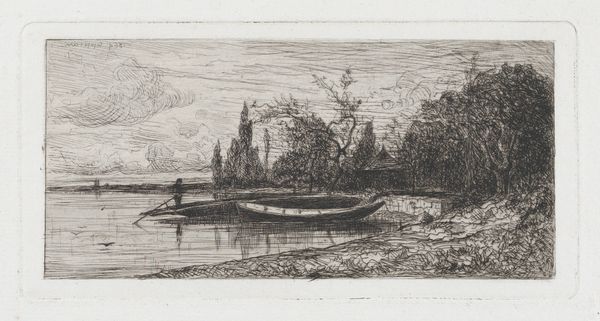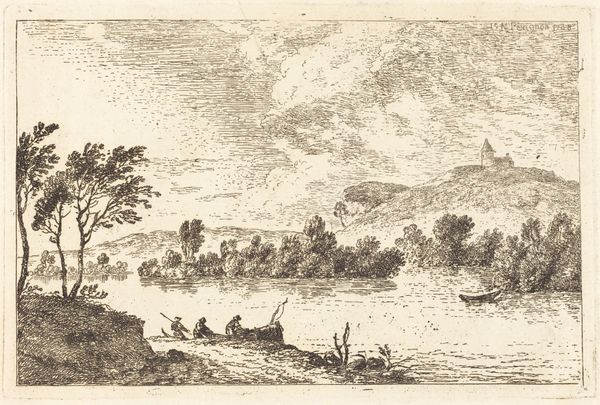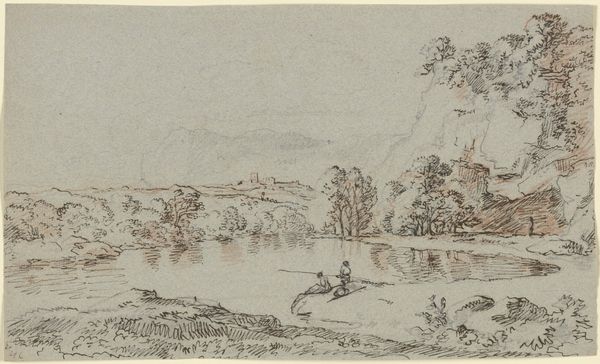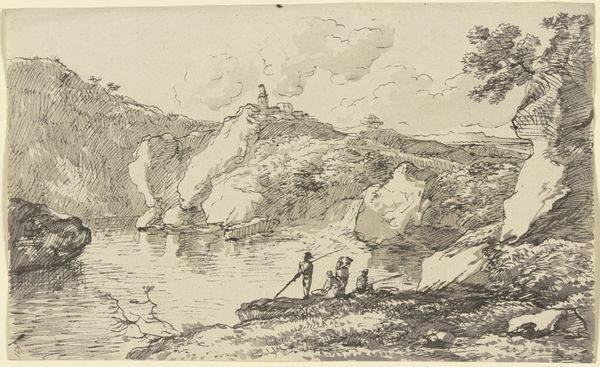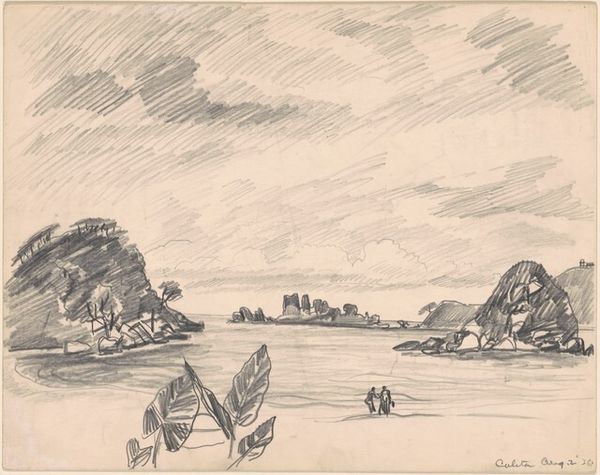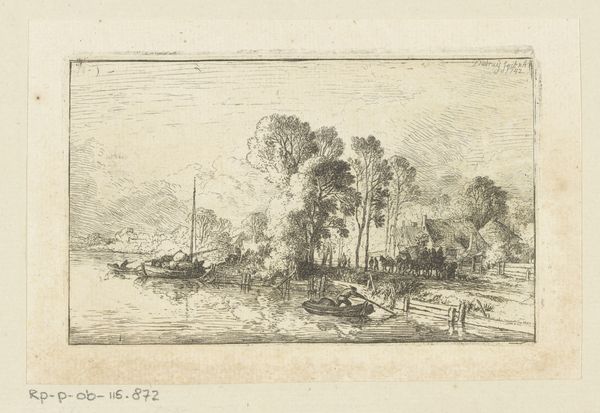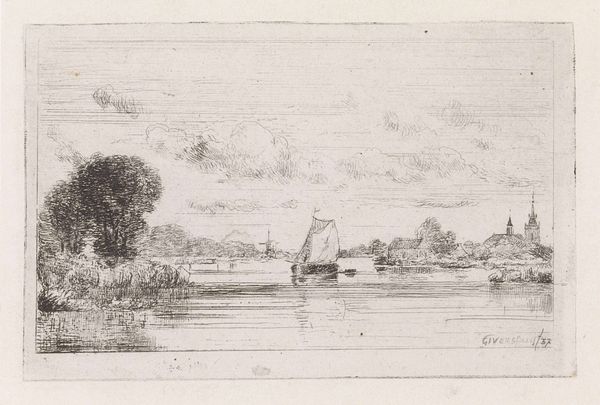
drawing, print, etching, paper, ink
#
drawing
#
ink drawing
# print
#
etching
#
landscape
#
paper
#
ink
#
romanticism
#
line
#
realism
Dimensions: 75 × 106 mm (image); 81 × 112 mm (chine); 95 × 144 mm (plate); 152 × 258 mm (sheet)
Copyright: Public Domain
Charles Jacque made this landscape near Asnières using etching, a printmaking technique, sometime in the mid-19th century. During this period, rapid industrialization was transforming the French countryside, raising questions about the relationship between nature and society. Through its visual codes, this etching speaks to broader cultural anxieties about modernization. We can see the artist's approach to the rapid changes in French society. The way the image is composed, with its tranquil river and verdant banks, creates a sense of harmony and balance that contrasts with the industrialization occurring at the time. Understanding the art of this period means exploring the social and institutional forces shaping artistic production. By consulting historical documents, critical essays, and biographical accounts, we can gain insight into the social, cultural, and political contexts that informed its creation.
Comments
No comments
Be the first to comment and join the conversation on the ultimate creative platform.
